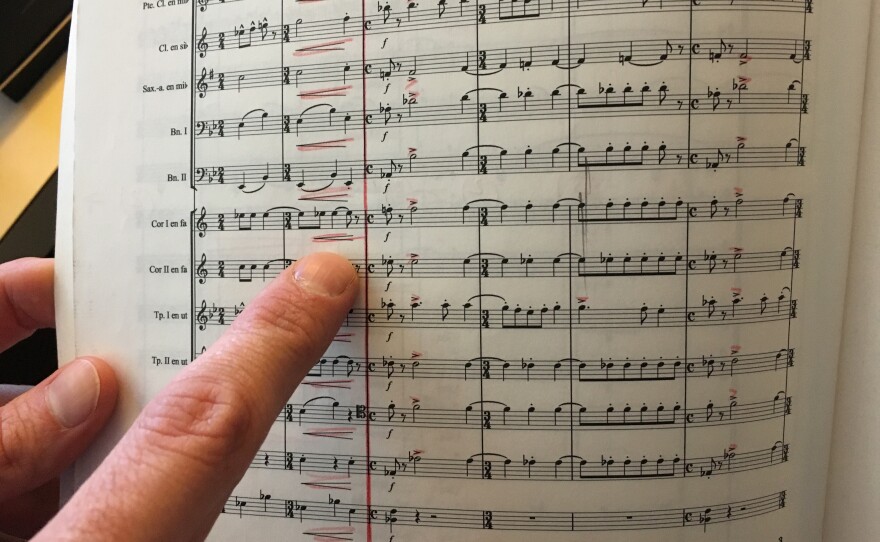The Massachusetts Chamber Players, based at UMass Amherst, has a new recording of wind music conducted by Matthew Westgate.
Westgate said the idea for the project was planted 10 years ago at a composing workshop.
Matthew Westgate: Somebody kind of at the forefront of all the great new things coming out, or things being discovered — he mentioned this piece that was written by Frank Martin, this famous Swiss composer, not as much in United States — but that he had written this music for a puppet theater and for a chamber group, and I was intrigued by that idea.
So I wrote it down in my notes, and I just kind of forgot about it, until I came to UMass a couple of years ago and I was getting ready to lead my own conducting workshop. I saw this note I had written to myself. It said, “Frank Martin. Puppet music. Chamber music. Check this out.”
Carrie Healy, NEPR: Tell me how the group came to be that ended up on the CD.
This all started with choosing the music. Once we did that, we figured out that the music required a pretty high level of performer.
So I wrote personal letters to all my colleagues in the department, and I personally invited them to be a part of it. Luckily, all of them said yes.
We got those people involved, and then we needed to fill out a couple other parts, and some pieces. So it was another opportunity to include the students in the project, and have them sit alongside their teachers, which is a really good learning experience.
Then we had to bring in a couple specialists — a basel drum specialist that actually lives in Connecticut, which was very lucky.

To look at the notation, it doesn't sound like it looks. There is — just as if you were reading a jazz chart, the rhythms that you see would sound different if you just read them as a legit classical player. So there's a there's an inflection, and there's a feeling that goes along with that.
The large part of this CD is this "Totentanz," a death dance, which sounds very morbid.
But it's a multi-movement piece, and each one is very colorful and very, very interesting. It's exploring a different side of death — that death is a natural evolution of being alive, rather than just about, you know, dying and going to somewhere.
So there's a lot of different colors. It's kind of like a jazz ensemble, almost, combined with a classical — it's kind of like a classical jazz ensemble, jazz big band.
What was the back story for this concerto?
Frank Martin was, in the 1920s, working as a music director for a puppet theater, which sounds crazy to us, but in the 1920s in Paris, that would not have been as crazy. It was like a marionette thing.
So his job there as the music director was he would adapt a lot of music for his ensemble. It was like a theater orchestra. He also would write incidental music, and write music for these puppet theater shows.


I found some old programs from this time period, from that theater. But this would have been originally written for the theater orchestra, and then Bastiaan Blomhert made this arrangement for 13 winds and piano. His musical text is very similar to the theater version.
Nothing is known about the commission, why it was written, or what it was meant to be performed for.
But when it sounds very theatrical and something like you pull out of a movie, and have an elaborate storyline — that's what really what was made for.
It does. I'm guessing there must have been some program to the music, but we don't know what that was.
Do you ever feel limited by the repertoire available, picking out pieces, when you do these kinds of projects?
Yeah. One of the challenges of being a wind band conductor — at least for me — I don't want to just make a recording of something that somebody else has already made 10 recordings of.
I would rather do something interesting that's older, and maybe people don't know.
It's almost like a service to the community, and to the public, to say, OK here are some great recordings of these pieces, so you get to know them, rather than record the Hindemith Symphony again, or something similar.











